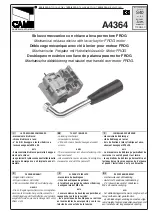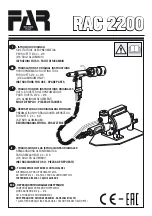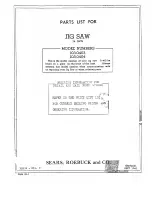
10
| English
Dust/chip extraction
The dust from materials such as lead paint, some types of
wood, minerals and metal can be harmful to human health.
Touching or breathing in this dust can trigger allergic reac-
tions and/or cause respiratory illnesses in the user or in
people in the near vicinity.
Certain dusts, such as oak or beech dust, are classified as
carcinogenic, especially in conjunction with wood treatment
additives (chromate, wood preservative). Materials contain-
ing asbestos may only be machined by specialists.
– Use a dust extraction system that is suitable for the ma-
terial wherever possible.
– Provide good ventilation at the workplace.
– It is advisable to wear a P2 filter class breathing mask.
The regulations on the material being machined that apply in
the country of use must be observed.
u
Avoid dust accumulation at the workplace.
Dust can
easily ignite.
Chip ejector (see figure B)
The chip ejector
(18)
can turn freely.
An extraction hose with a diameter of 35 mm or a dust/chip
box
(28)
can be connected to the chip ejector
(18)
.
To ensure optimum extraction, the chip ejector
(18)
must be
cleaned regularly.
External dust extraction
Connect the dust extraction hose
(29)
to a dust extractor
(accessory). You will find an overview of how to connect to
various dust extractors at the end of these operating instruc-
tions.
The dust extractor must be suitable for the material being
worked.
When extracting dry dust that is especially detrimental to
health or carcinogenic, use a special dust extractor.
Mounting the utility hook (see figures F–G)
Using a screwdriver, lever out the cover
(3)
from the recess
on the side. Mount the utility hook
(30)
and secure it with
two screws. Tighten the screws with a torque of 1.8–2 Nm.
The utility hook
(30)
can be swivelled.
Operation
u
Remove the battery from the power tool before carry-
ing out work on the power tool (e.g. maintenance,
changing tool, etc.). The battery should also be re-
moved for transport and storage.
There is risk of injury
from unintentionally pressing the on/off switch.
Operating modes
Setting the cutting depth (see figure C)
u
Adapt the cutting depth to the thickness of the work-
piece
. A space of less than the height of one full tooth
should be visible under the workpiece.
Loosen the clamping lever
(7)
. For a smaller cutting depth,
pull the saw away from the base plate
(15)
; for a larger cut-
ting depth, push the saw towards the base plate
(15)
. Adjust
the desired cutting depth at the cutting-depth scale.
Retighten the clamping lever
(7)
.
The clamping force of the clamping lever
(7)
can be readjus-
ted. To do so, unscrew the clamping lever
(7)
and retighten
it in a position offset by at least 30° in an anticlockwise direc-
tion.
Adjusting the mitre/bevel angle
We recommend that you place the power tool down on the
front side of the protective guard
(17)
.
Loosen the clamping lever for mitre/bevel angle
preselection
(9)
. Swivel the saw to the side. Set the required
mitre/bevel angle on the scale
(8)
. Retighten the clamping
lever
(9)
.
Note:
When making mitre cuts, the cutting depth is less than
the value shown on the cutting depth scale
(20)
.
Cut marks
0
45
The cut mark
(12)
indicates
the position of the saw blade
when making a right-angled
cut.
For a precise cut, place the
circular saw against the work-
piece as shown in the figure.
We recommend making a test
cut.
Start-up
Switching on/off
u
Make sure that you are able to press the On/Off switch
without releasing the handle.
To
start
the power tool, first press the lock-off switch
(2)
,
then
press and hold the on/off switch
(1)
.
To
switch off
the power tool, release the on/off switch
(1)
.
Note:
For safety reasons, the on/off switch
(1)
cannot be
locked; it must remain pressed during the entire operation.
Switching on the LED worklight
The lamp
(10)
lights up when the on/off switch
(1)
is lightly
or fully pressed, meaning that the work area is illuminated in
poor lighting conditions.
Run-out brake
An integrated run-out brake shortens the time the saw blade
keeps running for after the power tool has been switched
off.
Protection Against Deep Discharging
The lithium-ion battery is protected against deep discharge
by the Electronic Cell Protection (ECP). When the battery is
discharged, the power tool is switched off by means of a pro-
tective circuit: The application tool no longer rotates.
Practical advice
u
Remove the battery from the power tool before carry-
ing out work on the power tool (e.g. maintenance,
changing tool, etc.). The battery should also be re-
1 609 92A 750 | (29.04.2022)
Bosch Power Tools











































